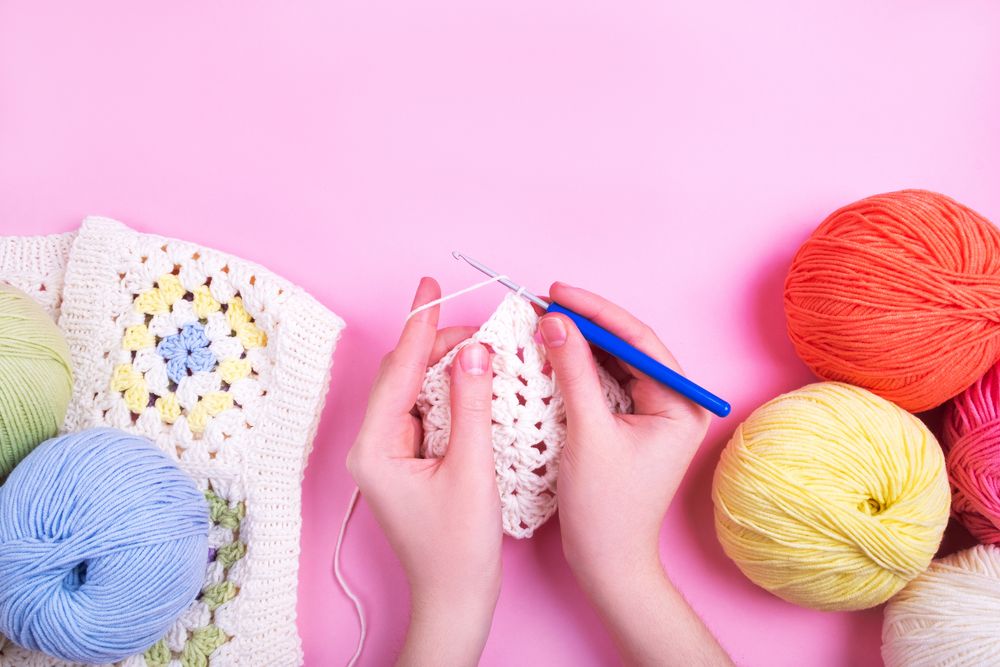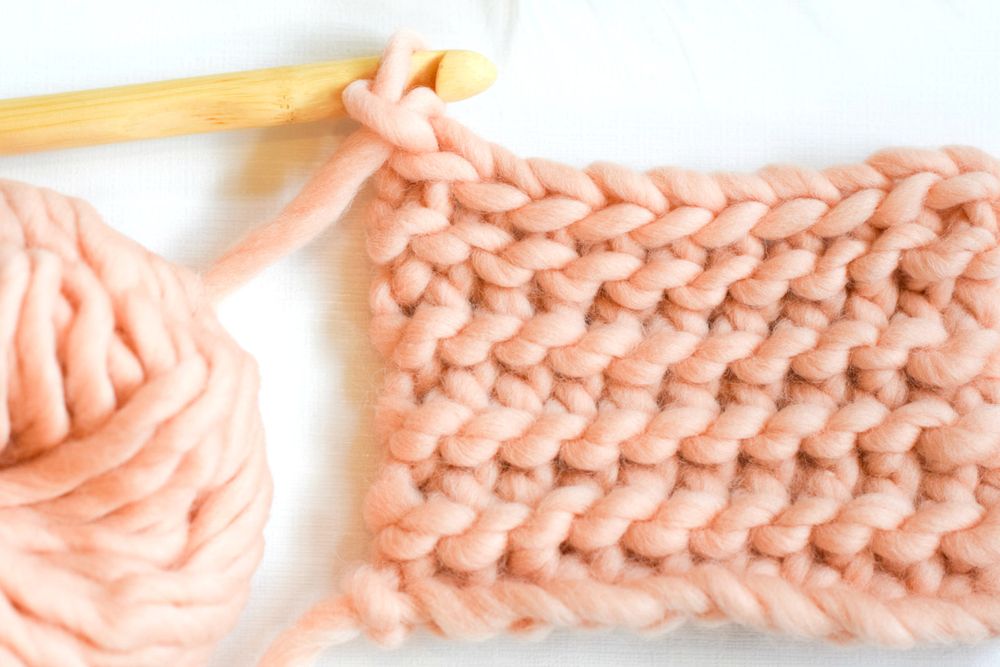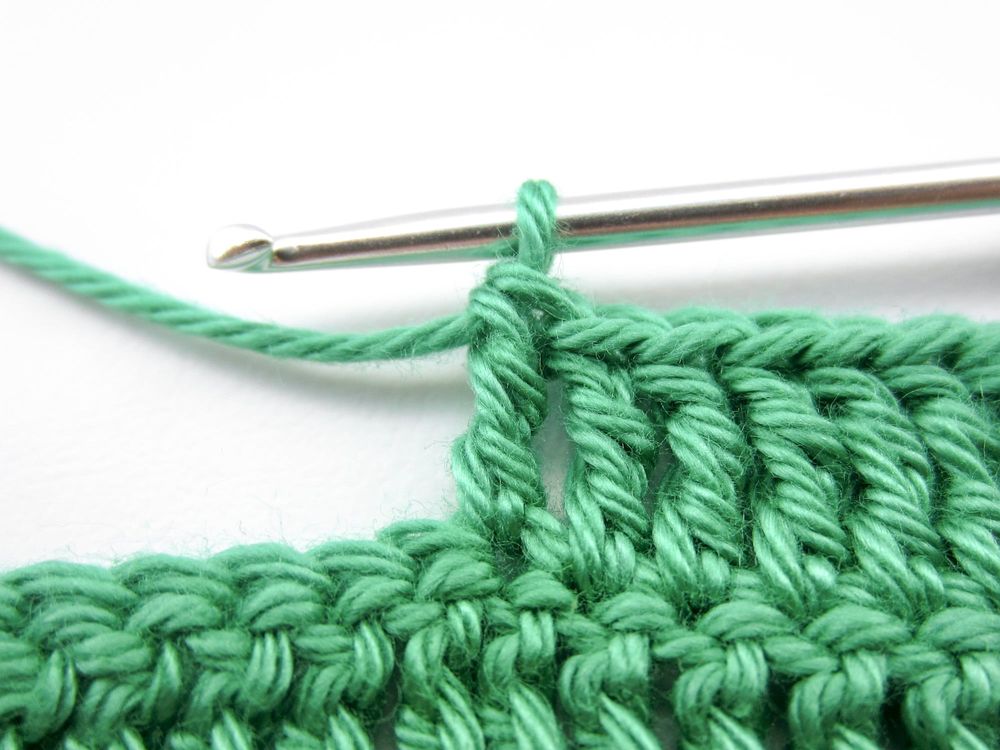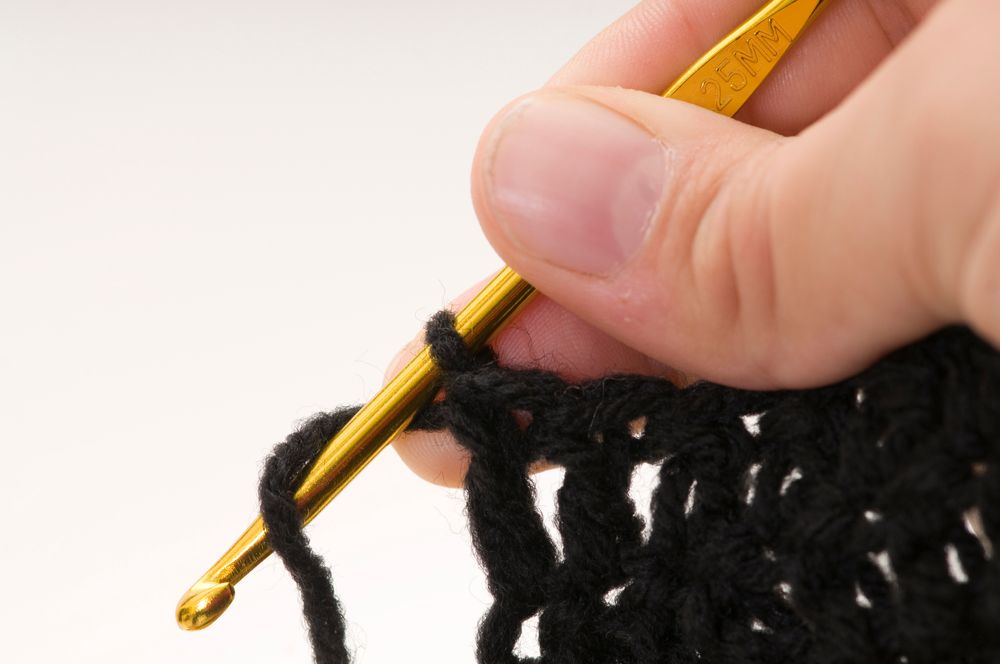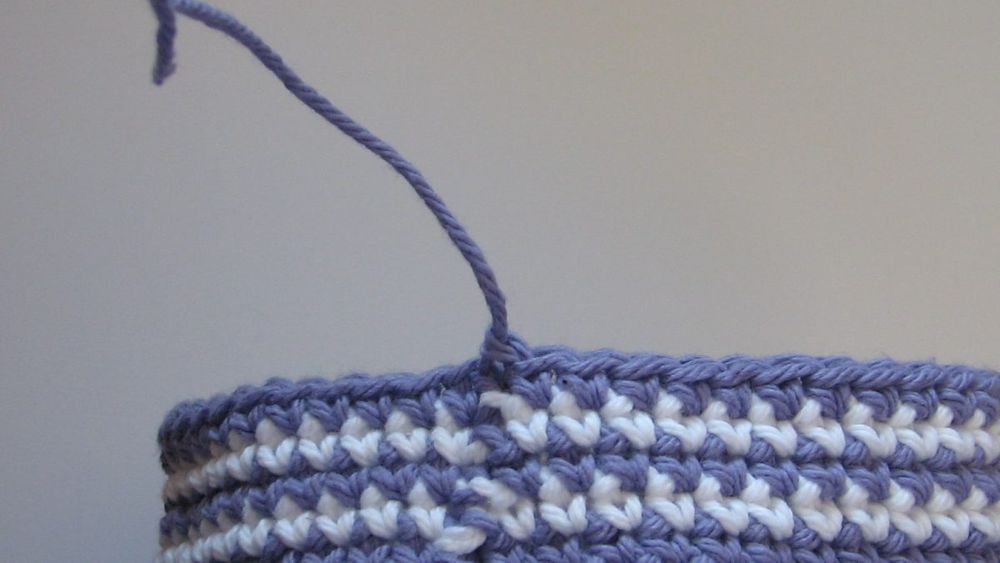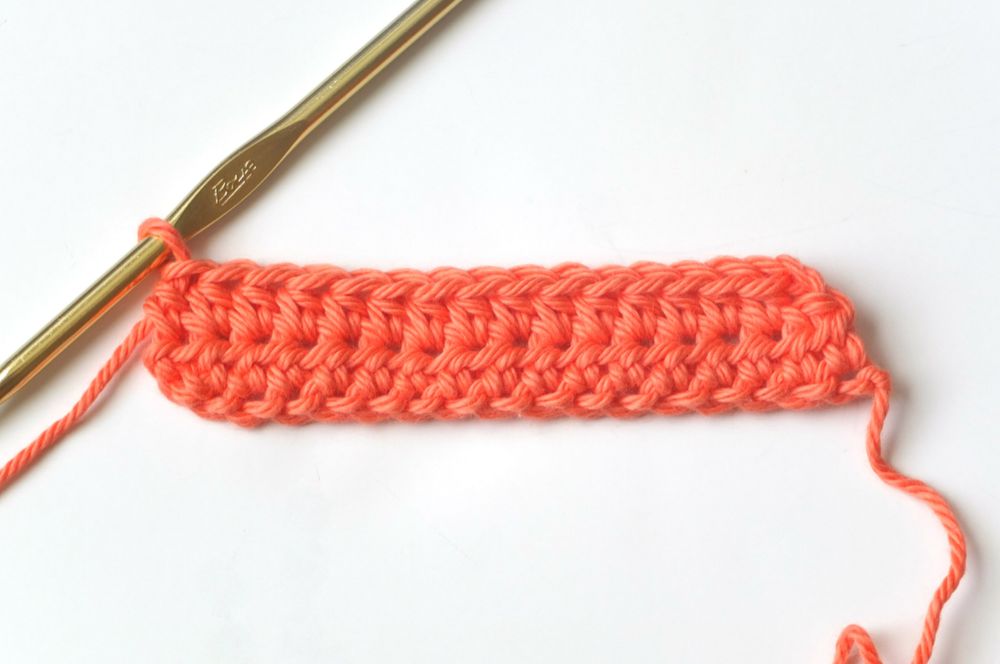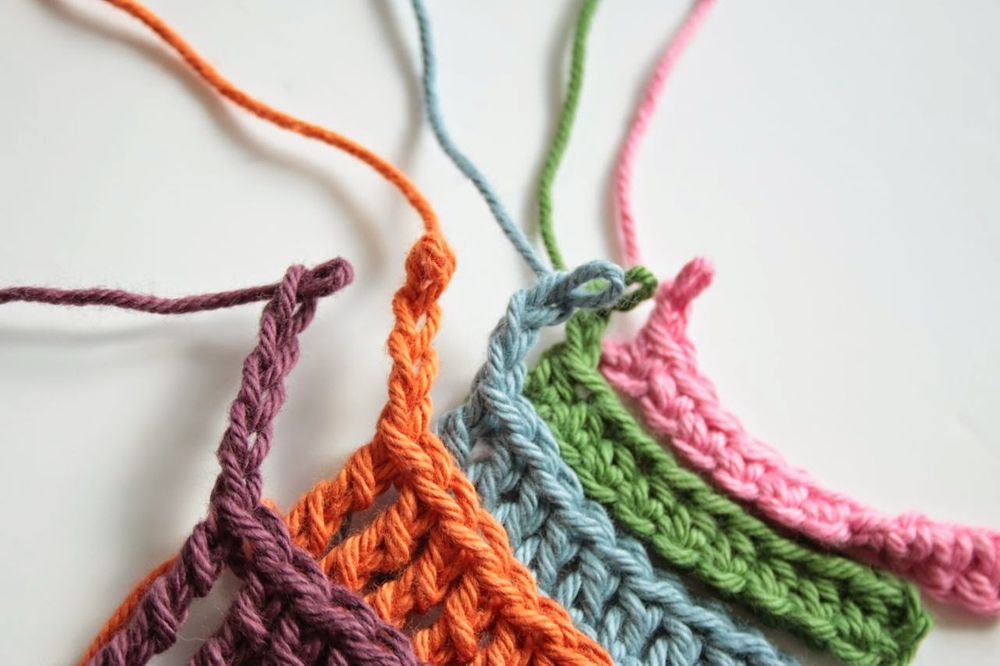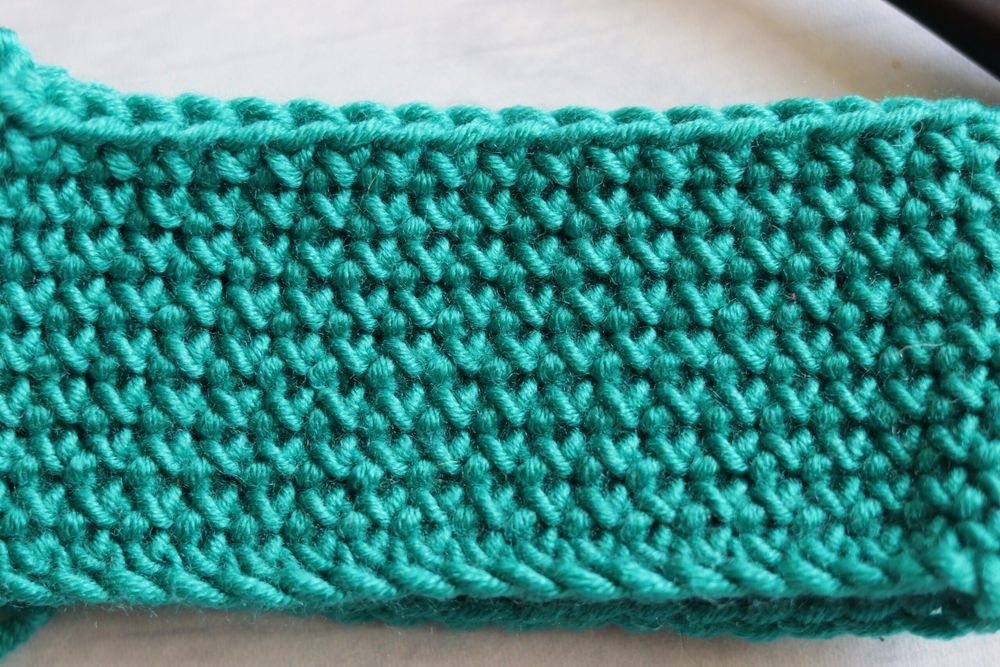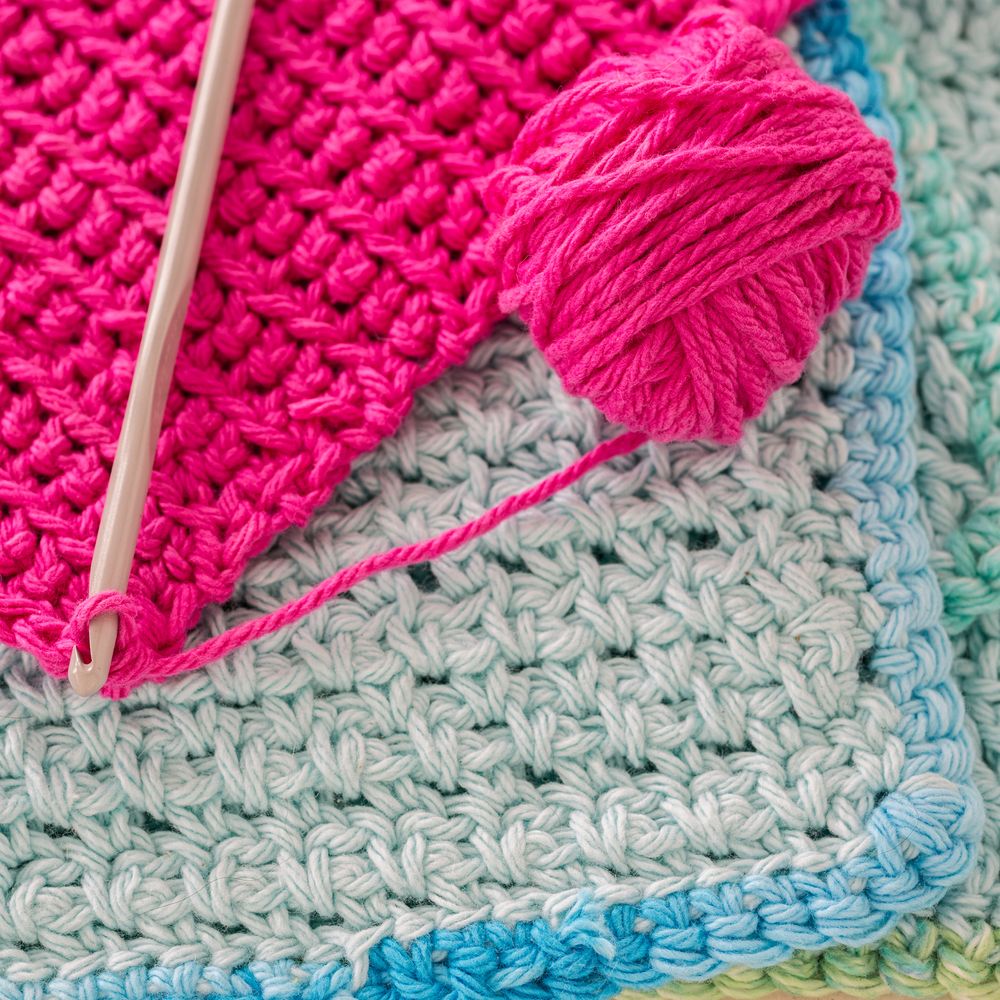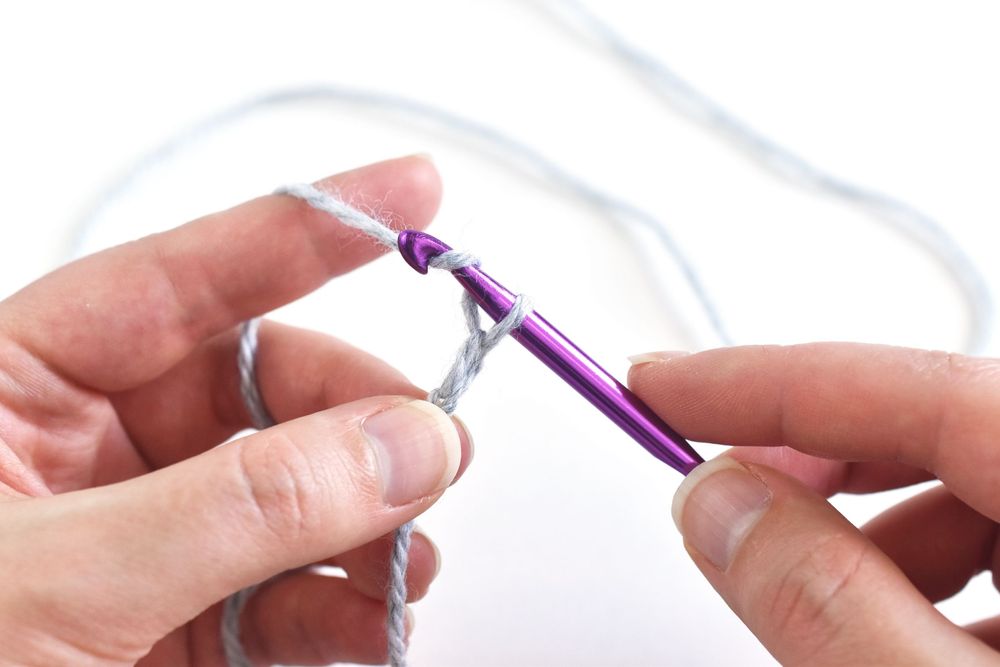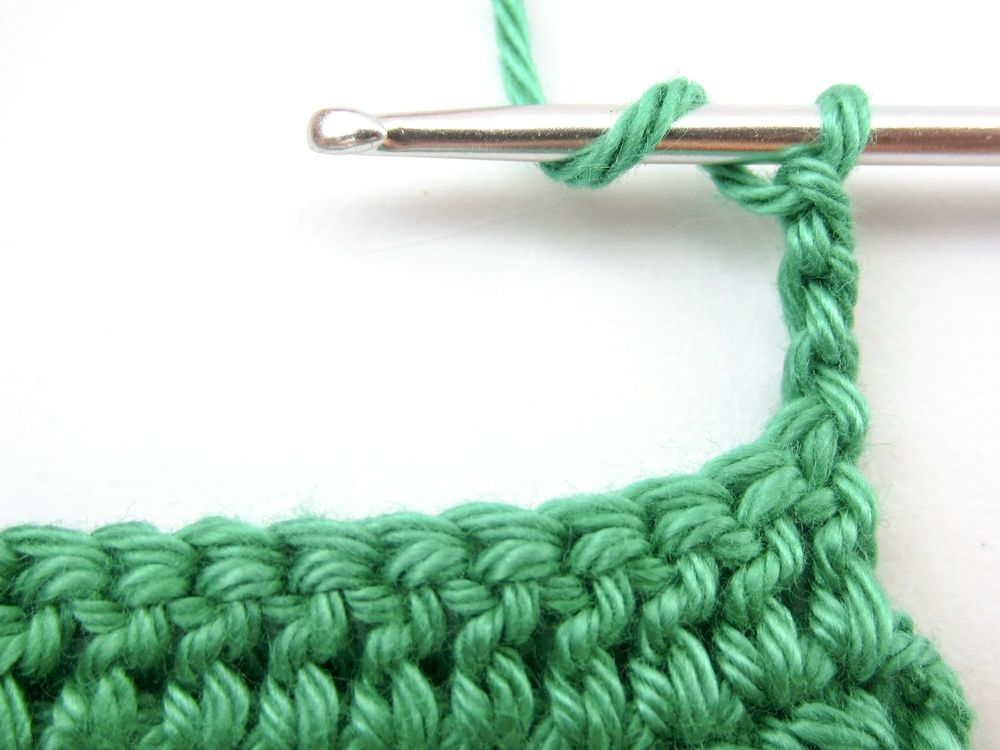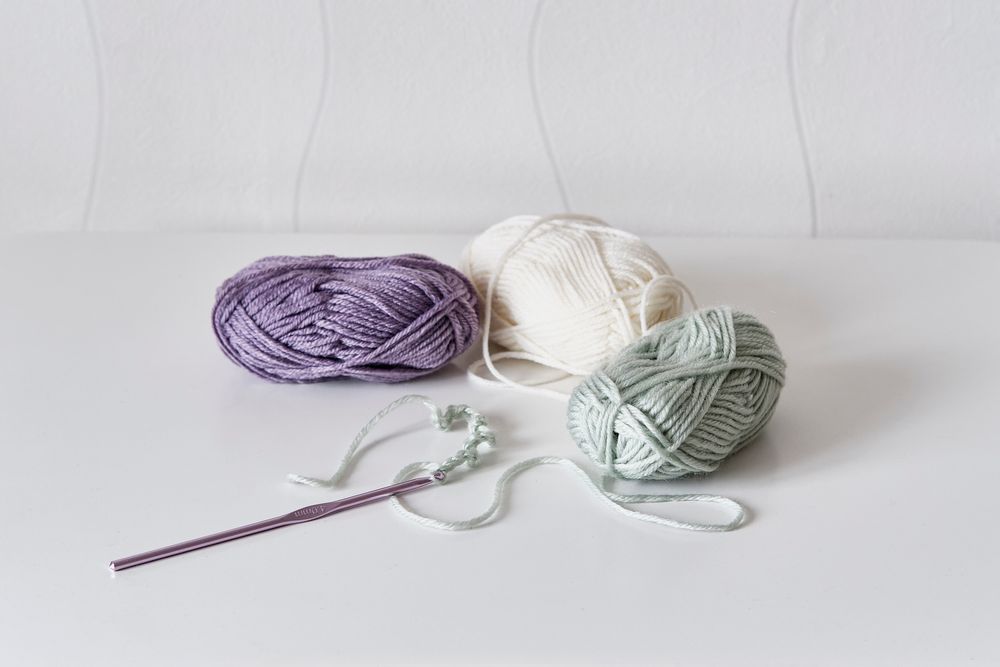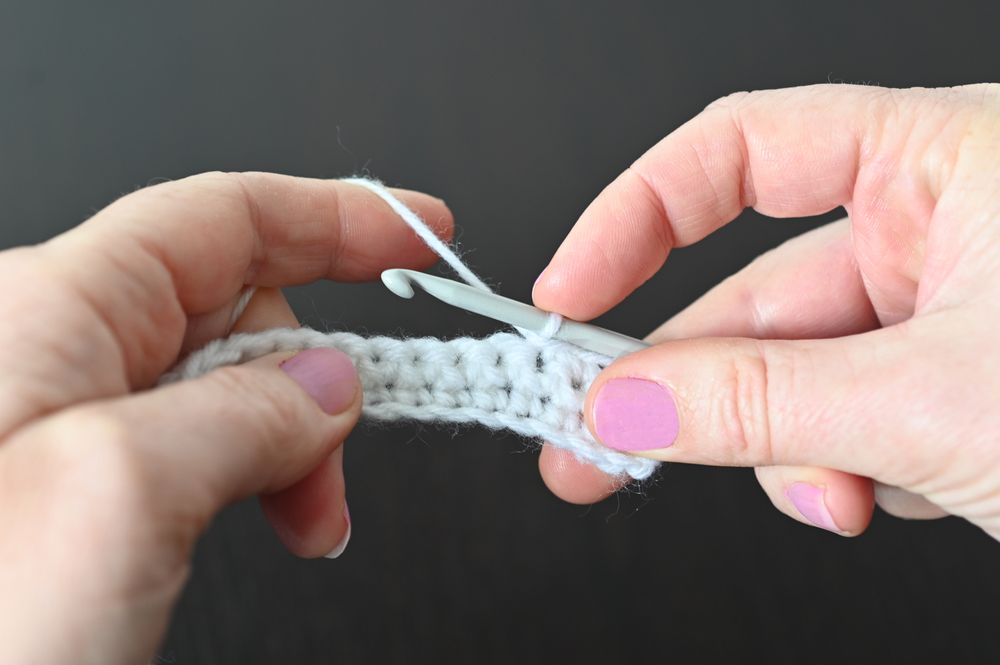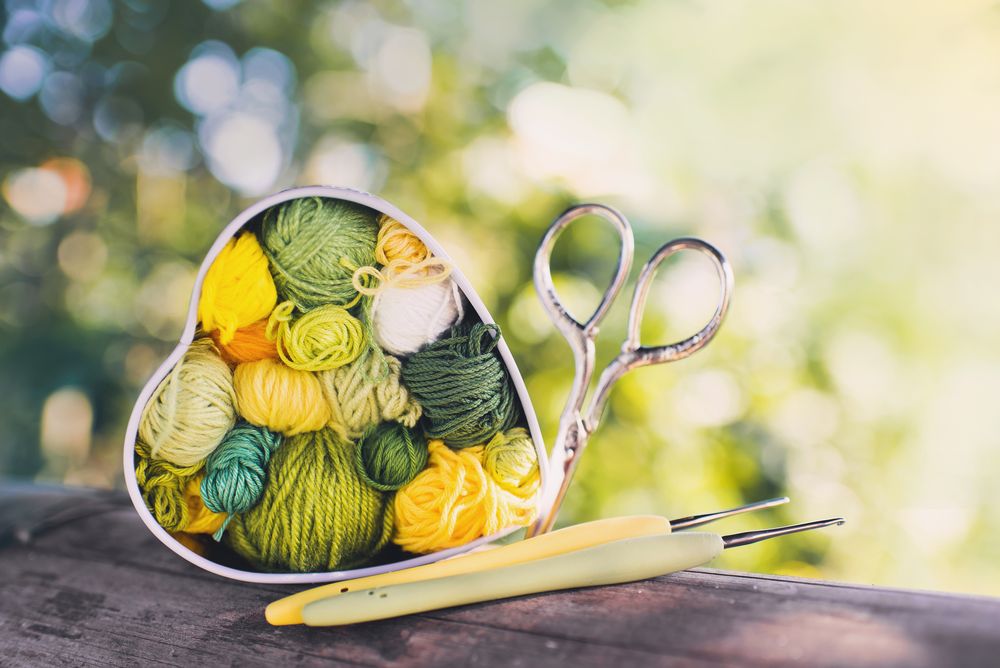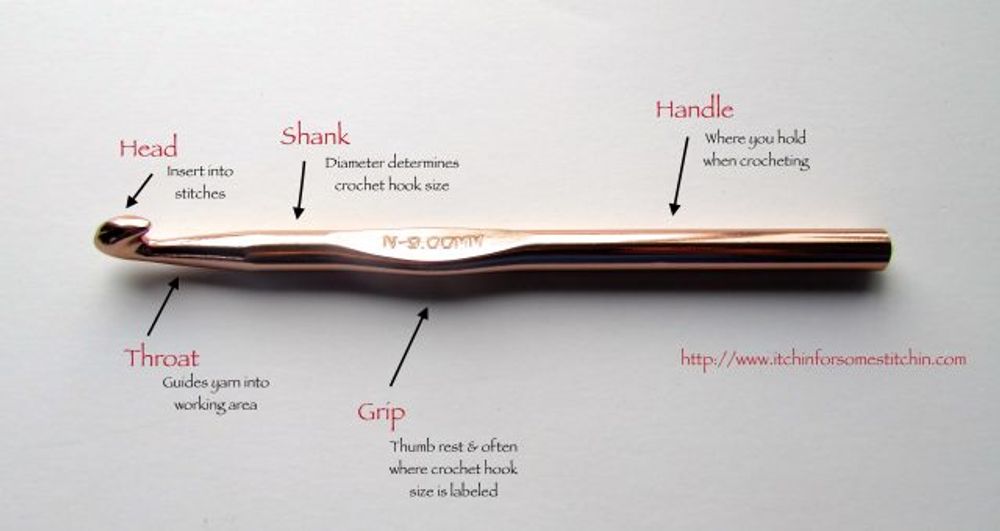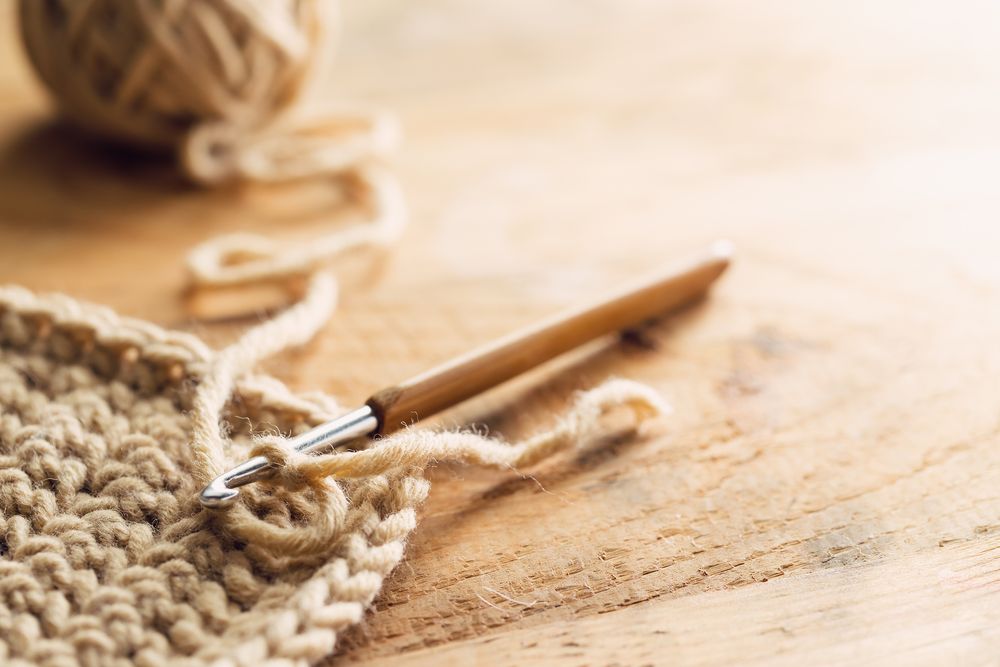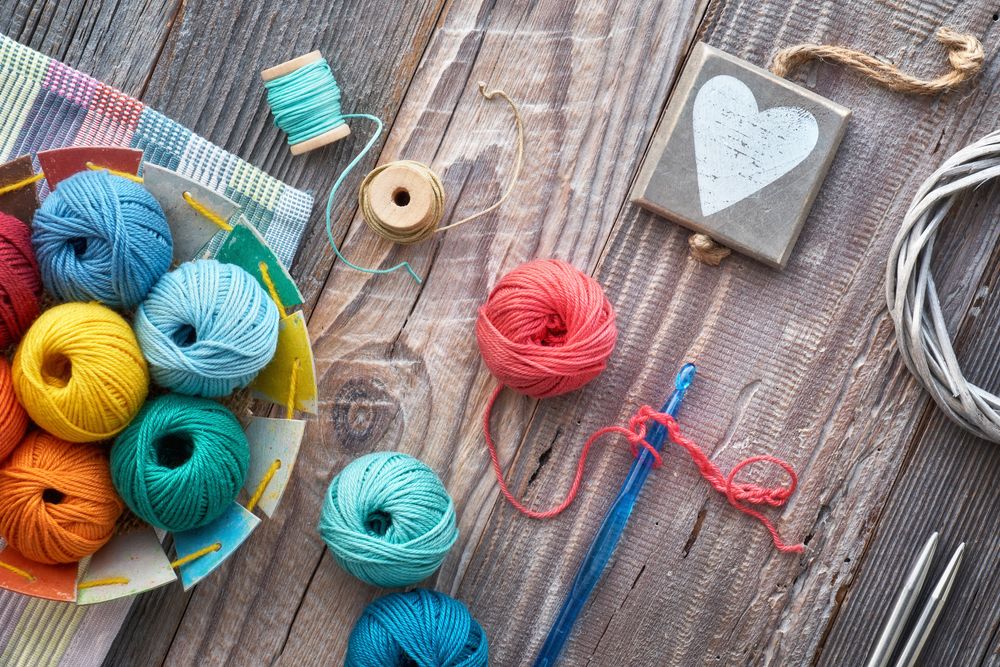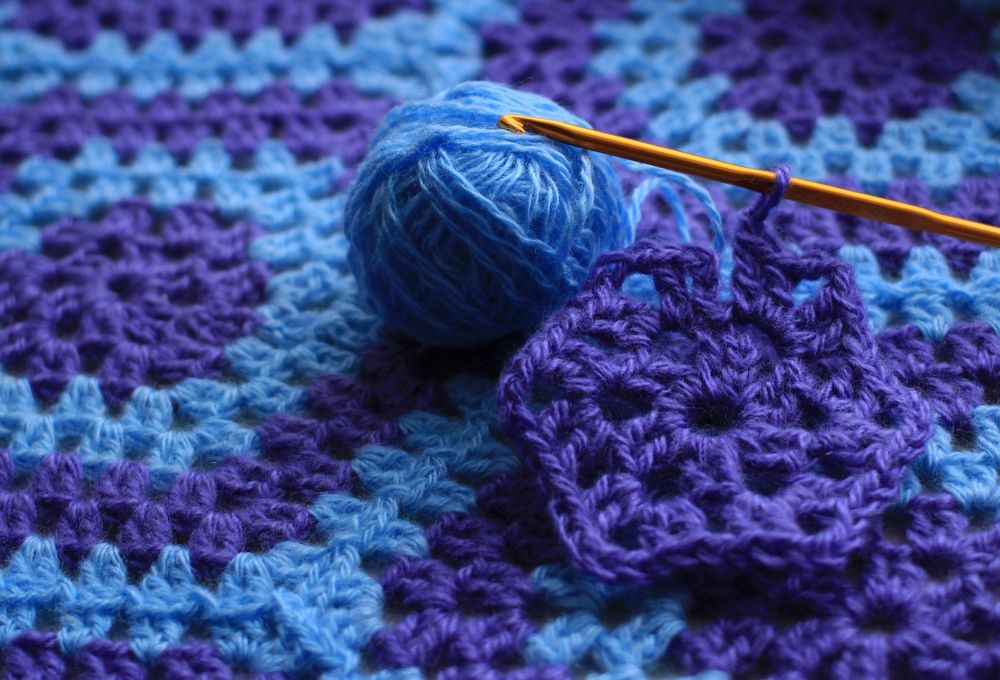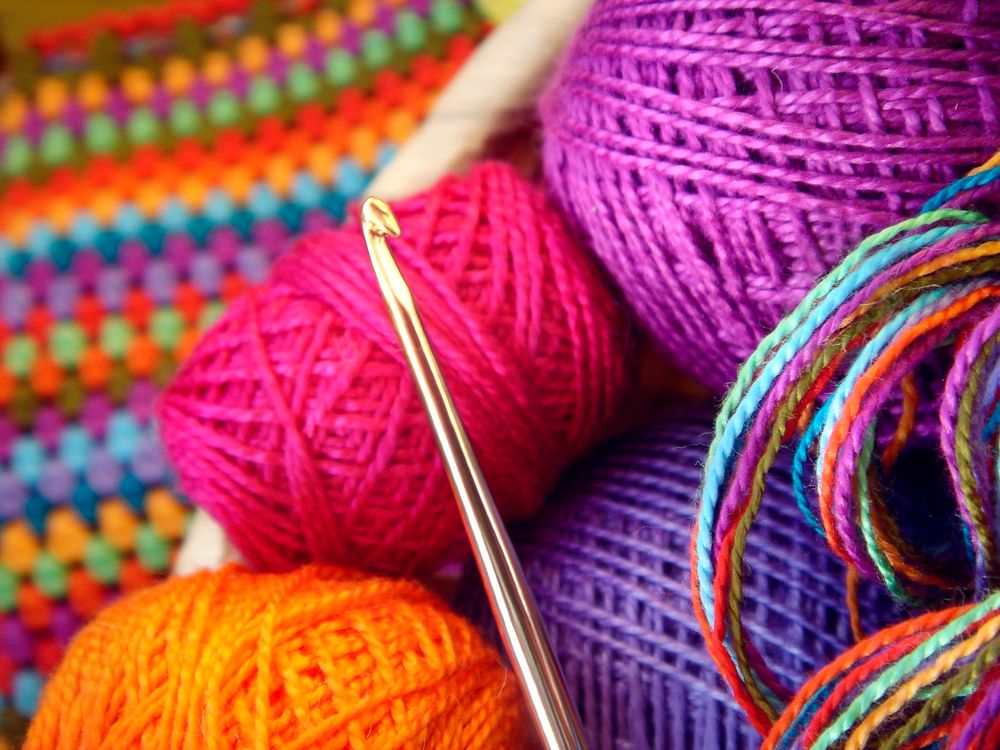People have been crocheting for hundreds of years, and learning the process is easier than you may think. To help you along with your crochet journey, we’ve put together the ultimate beginners’ guide on how to crochet. As with learning any new hobby, practice makes perfect, and it may take you a few attempts to truly get the hang of the stitches. But, don’t be discouraged; you have to start somewhere, so be patient; you’ll get it, eventually!
What is Crochet?
Crocheting is one of the most popular yarn crafts which gained major traction in the 70s. It also came back on trend during the pandemic, when everyone was stuck at home. As people had nothing else to do with their time, many picked up the hobby and created handmade items with just a hook and yarn. So, what is crocheting? Well, in simple terms, crocheting is creating a looped piece of fabric with a special tool called a crochet hook. It’s best to start with the basic stitches to set your crocheting foundation. And once those stitches are mastered, you can progress to more technical stitches and create more detailed items.
What do I Need to Start Crocheting?
One of the best things about crocheting is the fact you only need a crochet hook and yarn to get started. Yarns and hooks come in different weights and sizes, and as you’re just starting off, it’s best to choose a yarn and hook that is easy to work with.
Yarn
Yarn is a spun thread that comes in different weights. The pattern you’re following will require different yarns, as some will need super-fine yarns and others bulky yarns. To start with, we recommended opting for a ball of medium-weight wool, acrylic, or cotton yarn. for reference, medium-weights fit into the number four category when you’re out yarn shopping. Along with it being medium weight, try to find a yarn that is smooth in texture and light in color. Smooth, light-colored yarns make it easier to see your stitches during the crocheting process. You can purchase your yarn online or head to your local craft store and ask a member of staff to assist you.
Yarn Weight
When it comes to yarn weight, the higher the number on the yarn, the thicker it will be.
Number 1 – Super fineNumber 2 – FineNumber 3 – LightNumber 4 – MediumNumber 5 – BulkyNumber 6 – Super bulkyNumber 7 – Jumbo
Crochet Hook
The next piece of kit you’ll need is a crochet hook. Crochet hooks also come in a range of shapes, sizes, and materials. And the size of your hook will depend on the weight of your yarn. Thick yarn will require a large crochet hook, and vice versa for thinner yarns. Because you’re a beginner using a medium-weight yarn, then an ergonomic hook in either a G6 or H8 size will work best. The backs of a yarn label are a good indicator as to what hook suits that specific yarn, and again, you can purchase these online or head into a store.
What is a Crochet Hook?
A crochet hook is a small handheld tool designed specifically for crocheting. There are five parts to a crochet hook: the point, throat, grip, shaft, and handle.
Hook Sizes
As mentioned before, hooks come in at a range of different sizes, and they’re identified by a metric or US name. Here are the crochet hook sizes:
B- 1 or 2.25 mmC- 2 or 2.75 mmE- 4 or 3.5 mmD- 3 or 3.25 mmF- 5 or 3.75 mmG- 6 or 4 mm7 or 4.5 mmH-8 or 5 mmI-9 or 5.5 mmJ- 10 6 mmK- 10.5 or 6.5 mm7 mmL- 11 or 8 mmM/N- 13 or 9 mmN/P- 15 or 10 mmP/Q or 15 mmQ or 16 mm40 mm
Other Items
These items aren’t necessary, but they could make your life a little bit easier. They include:
Stich markers – These are a tool used in knitting and crocheting to help you identify important locations during your crocheting process.Small, sharp scissors – Any scissors you have lying around at home will do, but small, sharp scissors make the process a lot easier, especially if you’re working with thin yarn.Yarn needles or blunt-tipped needles – Yarn needles help to weave in the ends of your crochet piece.
How to Hold a Crochet Hook
There are two common ways to hold a crochet hook, and they are the pencil grip and the knife hold. And guess what, their names imply exactly how to hold them. The knife hold would be as if you were cutting with a knife, and the pencil hold is like you would hold a pencil. When crocheting, you need to hold your hook in your dominant hand and the yarn in your non-dominant hand. So, now you’ve come to terms with the supplies, let’s get into the beginner crochet tutorials for a range of different stitches.
How to Crochet: Step by Step
Before we begin, it’s important to mention that this guide will be using right-handed instructions with U.S. terms for crochet stitches. Here is a handy article to help you convert them to British terms if needs be.
Step 1: Hold the Yarn Correctly
We previously mentioned before about holding the yarn in your non-dominant hand. To hold the yarn, you need to loop it through your fingers. To do this, loop the yarn once around your pinkie finger. And from here, take it under your third and middle fingers and pull it up over your index finger. You can also just pass the yarn over your pinkie finger, but looping it provides more tension in the yarn.
Step 2: Tie a Slip Knot to the Crochet Hook
The next step is a simple one, and that is tying a slip knot to the crochet hook.
How to Tie a Slip Knot:
Step 3: Yarn Over
Yarn over, abbreviated to YO, is a technique you’ll use to make numerous basic crochet stitches, so it’s important to master this technique before moving on.
How to Yarn over:
Step 4: Mastering the Chain Stitch
Now that you’ve learned to yarn over, it’s time to master the chain stitch. Chain stitches are an important part of crocheting, and after making a slip knot, the next step in most crocheting projects is to make a series of chain stitches. These stitches are not only a foundation chain, but they also pop up throughout patterns to combine other stitches.
How to Chain Stitch:
Chain Stitch Tips:
The chain stitch you made by pulling your working yarn through your slip knot doesn’t usually count towards the number of stitches in your chain. When counting your stitches, start from the chain stitch after your slip knot starter. This rule also applies to the loop on your hook. This doesn’t count, so the previous chain stitch you made would actually be the last one you count. Tension is really important in crochet, and you should always maintain an even tension throughout your entire piece. This takes practice, and over time, you’ll find the perfect tension to make smooth and even stitches.
Step 5: Working Other Stitches Into the Chain
Now that you’ve completed your chain stitches, look at the front and back sides of the chain. The front section should look like a row of interlocking V’s, whereas the back should have a yarn bump. To work the next row of stitches into your foundation chain, you first need to consult your crochet pattern. Crochet patterns will tell you where on the chain you need to make your first stitch. For example, if the pattern says you need to work your first stitch into the second stitch of the chain, you will need to pass the tip of your hook through the second V. From here, you can complete your next stitch.
Step 6: How to do a Single Crochet Stitch
Single crochet stitches are one of the basic stitches that make up the foundations of crocheting. They’re one of the more basic and common stitches, which are abbreviated to SC in crochet patterns. Once you’ve perfected the single crochet stitch, there are numerous ways that you can use it in your crochet project. You can work it into rows, spirals, rounds, or even complete the project’s edges.
How to Single Crochet Stitch:
Step 7: Making a Turning Chain
When you reach the end of a row, you’ll need to make a turning chain stitch. A turning chain brings the yarn up so you can work on the next row of stitches. The number of turning chain stitches you need to do depends on which stitch you’re crocheting next.
Single crochet stitch = one turning chain stitchHalf double crochet stitch = two turning chain stitchesDouble crochet stitch = three turning chain stitchesTreble crochet stitch = four turning chain stitches
How to Make a Turning Chain:
Step 8: Working in Your Second Row
Now that you’ve created your chain, the first row of single stitches, and completed your turning chain, it’s time to work on the second row of stitches.
How to Add a Second Row:
Step 9: Fastening Your Work Off
Finally, you’ve finished your piece, and you need to fasten off the yarn. Fastening the yarn correctly will stop the stitches from unraveling
How to Fasten Off a Crochet Piece:
Other Crochet Stitches
Great job! You’ve covered the basic stitches, and now you can move on to slightly more complex stitches to make your next crochet project look amazing.
Half Double Crochet Stitch
Half double crochet stitches are abbreviated to HDC in crochet patterns, and you can use them to produce baby blankets, scarves, or sweaters. The good news is that the half-double stitch isn’t too different from your single crochet stitch, so you should have no trouble picking it up.
How to Half-Double Stitch:
And there you have it! A half-double stitch.
Double Crochet Stitch
Double crochet stitches are another of the beginner crochet stitches, and, like the half-double, it doesn’t differ tremendously from your basic single stitch. Double stitches are abbreviated to DC in crochet patterns, and you can work them into rows, spiral rounds, or joined rounds.
How to Double Stitch:
Treble Crochet Stitch
Treble crochet stitches or a triple crochet stitch are abbreviated in crochet patterns as TR. Treble stitches are taller than a double stitch and are used to make looser stitches for airier items.
How to Treble Stitch:
Slip Stitch
Another important stitch to know is the slip stitch, which on crochet patterns is abbreviated to SL ST. Slip stitches are versatile and are more considered a technique instead of a stitch because you can use them for different things. One use is to move yarn across stitches without adding any height like you would with a double or triple stitch. You can also use a slip stitch to join a round of crochet by connecting the last stitch to the first stitch of that round.
How to Slip Stitch:
How to Make a Circle Using a Slip Stitch:
Practice Your Crocheting with a Granny Square
Granny squares are great practice when starting with crochet and all the crochet techniques. A granny square or granny cluster are three double stitches that you work into the same space. The clusters are separated by chain spaces and have one chain space along the sides and three chain spaces in the four corners. Granny squares come in many variations, so you can really put your skills to the test and see if you have what it takes to be a professional crocheter.
How to Crochet: Our Final Thoughts
Crocheting is an amazing activity that you can quite literally do anywhere. As long as you take your yarn and crochet hook, that is. If you’re just starting to learn how to crochet, there are many free crochet patterns on the internet that you can download and attempt at home. So, now that you’ve covered all the crochet for beginners basics, your crocheting possibilities are endless, and we hope you have an incredible time practicing your newfound skill. As we close on our step-by-step guide to crochet for beginners, we’d love to know if you’ve ever attempted crochet? If so, what’s the coolest thing you’ve managed to crochet, and how difficult was it? Let us know in the comment section down below!
